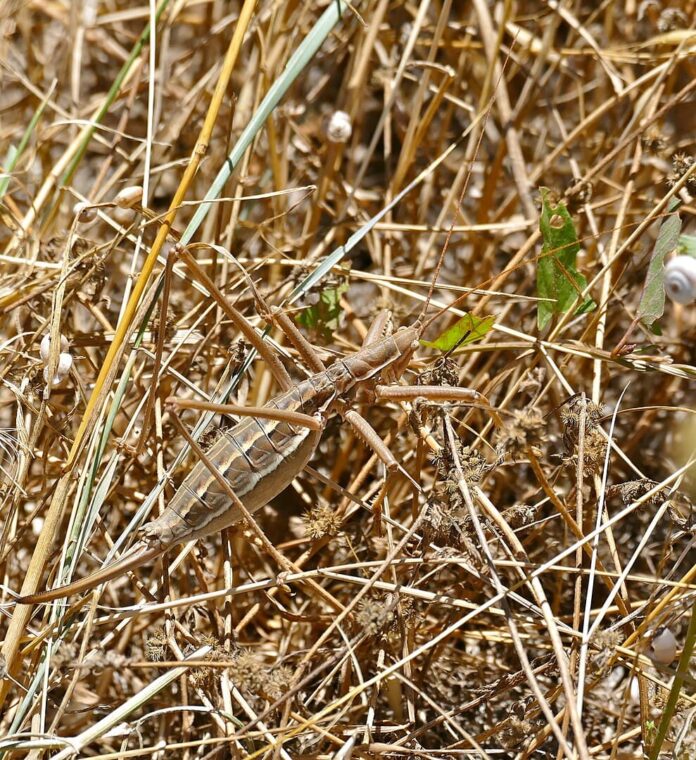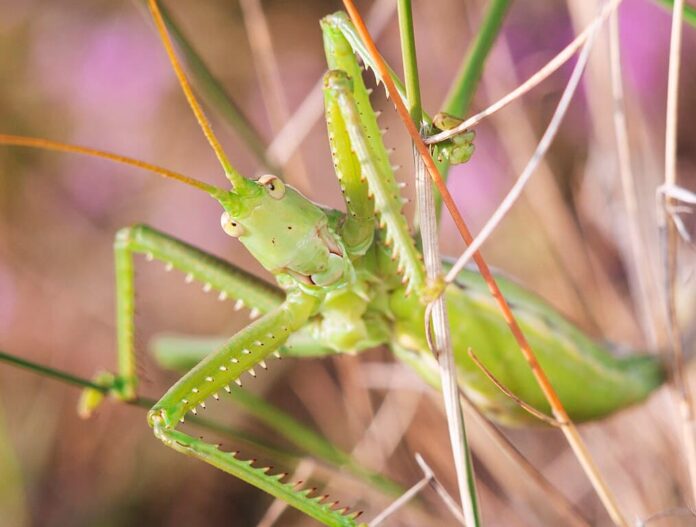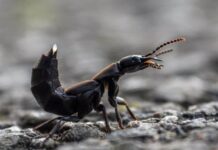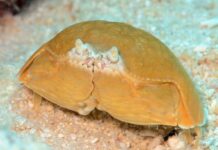Spiked magician is a very confusing name for a cricket, and we are all eager to know why the nickname. Actually, the name came from the “enchanting” manner of the cricket when it waves its forelimbs as it approaches its prey. The prey definitely thinks otherwise with the enchanting part. It is not every day you come across an article about a large cricket like this one, so check it out.
1Appearance

A spiked magician has an overall length of 10.5 centimeters which is pretty big for a cricket. This is why it is actually one of the largest insects in Europe, and one of the largest members of its kind. It has a brown or green body with a pale stripe along its side which allows perfect camouflage. The first and second pairs of legs are spiky while the third pair is extremely long which helps in leaping. A spiked magician has a segmented body that ends with a long ovipositor because they are asexual. Simply put, all spiked magicians are females, and they breed by themselves.
2Feeding & Habitats

Just like all crickets out there, this one is also a predator with an interesting menu. They actually feed on crickets and locusts, but they do have a favorite, mantises; especially the European mantises. Along with that, they also feed on other insects and even small lizards. With that size, catching small lizards is not a problem for them. And speaking of feeding, spiked magicians also have a cannibalism behavior but only among nymphs, not adults. So how does this enchanting bug hunt? These insects have strong fore and mid legs with sharp spines which help a lot in catching prey. Once a spiked magician spots a possible meal, it ambushes by leaping on and grabbing the prey with its spiny legs. Then it bites into the neck or throat of its victim to kill it, and eats it right on the spot.
Spiked magician is from the southern half of Europe and Central and Western Asia. Across their wide range, these crickets live in forest steppes, grasslands, meadows, pastures, plains, shrublands, and thickets. Also, they inhabit semi-open areas at the edge of forests, gorges, grain fields, hedges, and vineyards as well. Despite the big distribution, the spiked magician was actually a vulnerable species on the IUCN Red List back in 1996. That was due to the habitat loss and insecticide but things got better 20 years later. Now, their population is back to least concern, and their current threats are climate change, forest expansion, and natural predators.
Related Post: Things You Don’t Know About Leichhardt’s Grasshoppers




